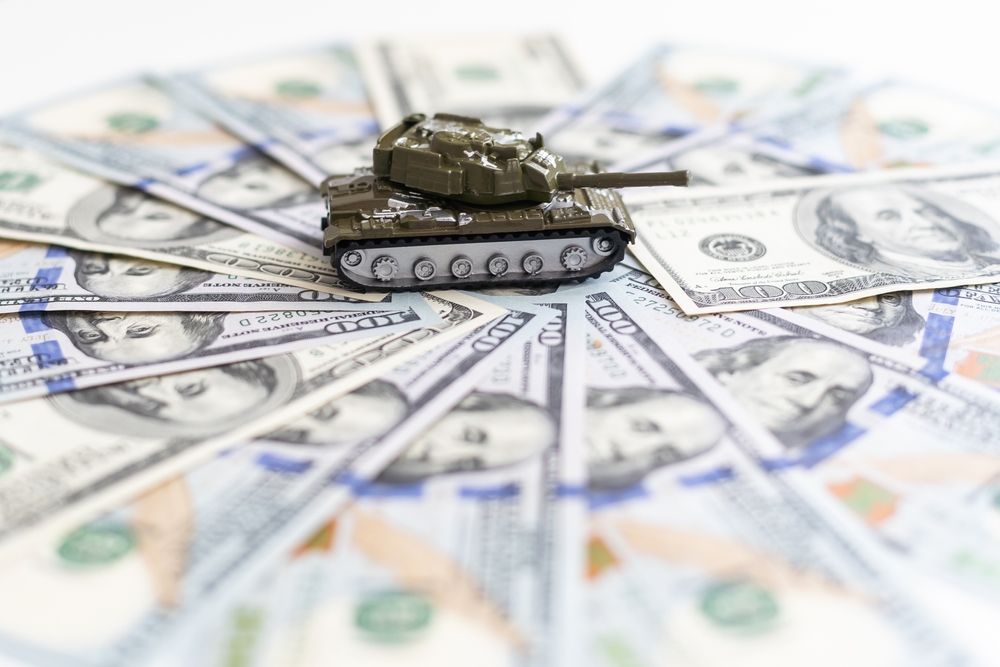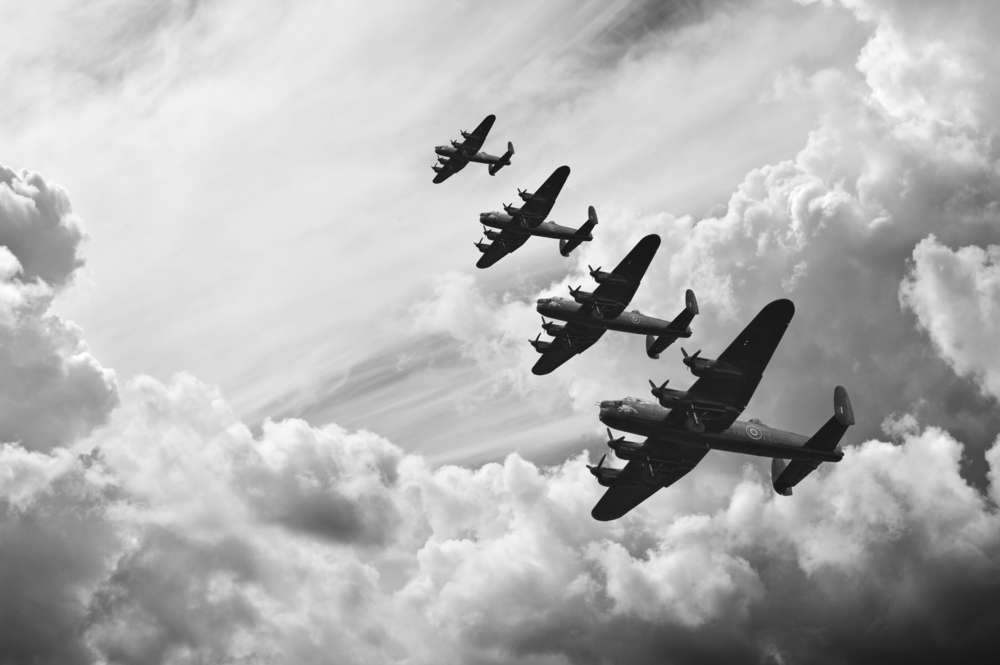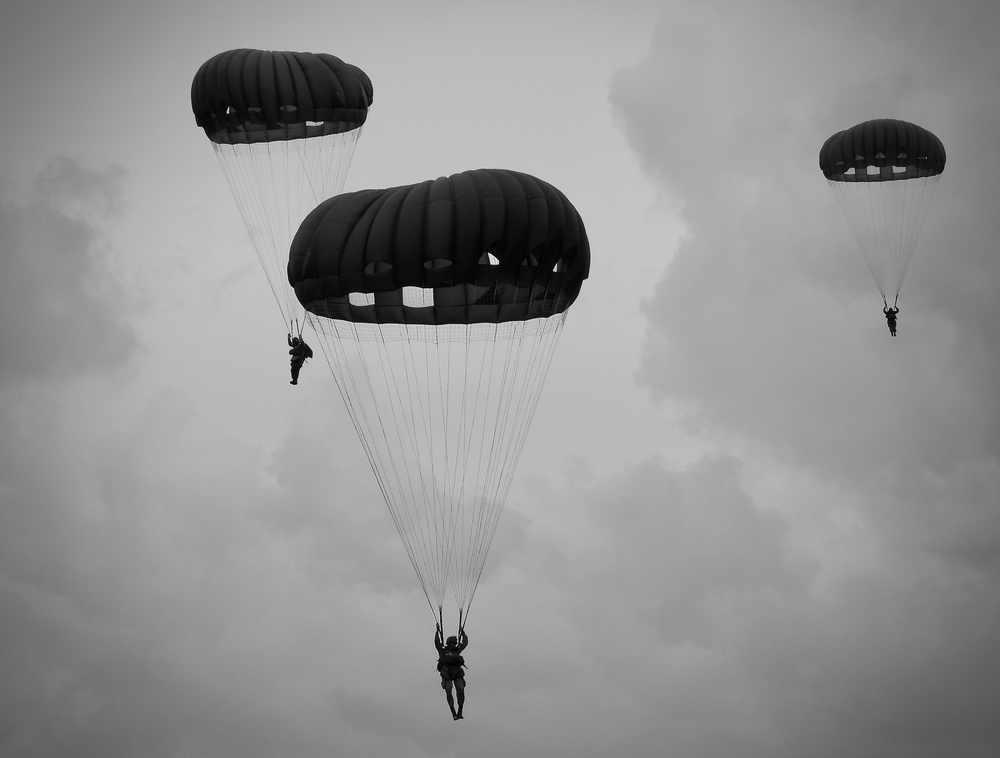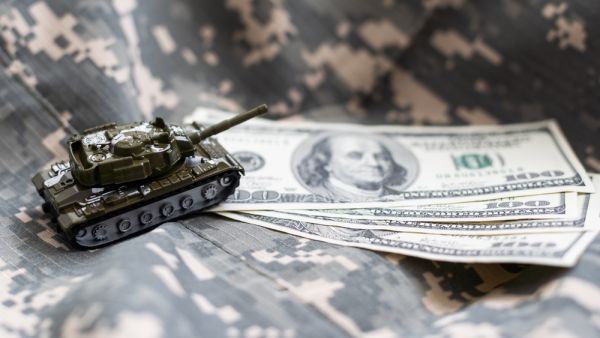ALBAWABA - Reports continue to emerge about the material and economic losses that could be caused by the ongoing occupation of Gaza, both for the Palestinian and Israeli economies, and its ramifications on the region and the global economy as a whole. However, calculating the cost of this aggression remains impossible until the dust of wartime activities settles.
the true costs of war are unpredictable as long as military operations persist, while people around the world often complain about the budgets allocated for defense, considering their astronomical figures, which usually come at the expense of development and prosperity in many countries. For instance, the production of a single nuclear warhead can cost millions of dollars, while countries like the United States and Russia may produce hundreds or even thousands of them.
In any case, calculating the direct costs of wars has its circumstances and complexities.

(Shutterstock)
Let's take a look at some of the most costly wars in contemporary history
The Cold War: $5.8 trillion
From a technical standpoint, World War II is the most expensive war ever fought. However, the Cold War is still considered a war, even though no forces engaged in combat to achieve a major goal. Between 1940 and 1996, by summing up the money spent on the nuclear arms race that was at the heart of the Cold War conflict, the United States alone spent an astonishing $5.8 trillion.
It might be a safe bet to estimate that more than $10 trillion was spent globally on the Cold War and the ongoing maintenance of nuclear arsenals.
World War II: $4.7 trillion
Adjusted for inflation, World War II is supposed to have cost a hefty $4.7 trillion. In the war's final year, expenditures reached 40% of the United States' Gross Domestic Product.
Comparatively, this is much higher than the expenses of modern wars, which cost less than a trillion dollars. Part of this astonishing cost was due to the scope of World War II. The U.S. Army had 2.5 million members at the time, compared to World War I when 12.2 million personnel were deployed.

(Shutterstock)
This money went to line items in the defense budget such as 41 billion rounds of ammunition, 303,000 planes, 10,000 tanks, and 27 aircraft carriers, among many other expenses. To help cover the cost, taxes were increased by as much as 94% in some cases.
To boost men's enlistment, each was paid $50 per month. While trivial by today's standards, it was more than most professionals receiving regular salaries at that time.
World War I: $3.3 trillion
Although not as costly as World War II, World War I took a toll on the world's collective financial reckoning and took all the pennies within it. At that time, the cost of the war ranged from $185 billion to $208 billion. But even if you go to the low end of that scale and adjust for inflation since 1918, the bill comes to $3.3 trillion.
Germany paid more money than any other country, surpassing the current dollar value at the time to nearly $37 billion during the war, making it around $686 billion after modern adjustments. The United States spent only $41.4 billion, while the British spent $64.1 billion.
Germany paid a heavy price, with some of its parts experiencing excessive inflation that went beyond reason. The country's mark collapsed, and the authorities destroyed the country's economy to finance the war effort. Repairing this economic destruction was partly what paved the way for Adolf Hitler's rise.
War of 1812: $2.8 trillion
The War of 1812, one of the oldest wars in American history, proved to be a financial disaster over the ages and took about 20 years to yield its fruits. By the end of the war, the government had paid $158 million, over $90 million of which went to cover the cost of the Army and Navy. Adjusting for inflation, losses are estimated to be around $2.8 trillion.
By 1814, the government was broke. It had defaulted on many loans and couldn't cover regular expenses. Soldier salaries were delayed for up to a year, and the government had to offer land grants to soldiers in exchange for service, promising up to 320 acres for any soldier who stuck to the task until the end of the war, even if they didn't receive any pay.
In reality, the majority of the debts incurred during the war were paid by private sector millionaires, with David Barrish, Steven Gerard, and John Jacob Astor together contributing around $16 million to assist the country, which is equivalent to nearly a quarter of a billion dollars by today's calculations.
Afghanistan War: $2.3 trillion
Lasting for over two decades, the region remains unstable to this day, so there's no need to declare the mission accomplished yet.
Estimates vary, but the general consensus is that the total cost has reached approximately $2.3 trillion.
It's worth noting that detailing how these funds were spent is not straightforward. However, a total of $800 billion went towards direct expenses, such as soldier salaries and equipment. $85 billion was spent on training the Afghan army. However, the Taliban swept through the country, defeating that army in a matter of days.
Another $750 million went toward paying the salaries of the Afghan army, and other costs include money spent to aid injured veterans, as well as interest on all the funds spent in total.
Iraq War: $1.9 trillion
The United States engaged in the war in Iraq from 2003 until 2011, with its forces remaining in the country continuously. Estimates suggest that the total cost reached $1.9 trillion.
The majority of the expenses went toward the day-to-day costs of the war, including troops on the ground and the equipment they used, but much of this money was essentially embezzled.
Contractor funds were stolen in both Iraq and Afghanistan. In fact, estimates indicate that up to one-third of the funds allocated for contracting goes to fraudulent claims, essentially meaning that contractors overcharge the government to line their pockets.
Between Iraq and Afghanistan, this ranged from $31 billion to $60 billion. An additional $138 billion went to contractors, whether they were honest or corrupt.
Vietnam War: Trillions of Dollars
Although the war began in 1959, the United States became involved in Vietnam in 1965 and remained there until 1973. Over those eight years, more than $168 billion was spent, including $28.5 billion in aid to South Vietnam. This slightly surpasses trillions of dollars after adjusting for inflation by the end of the war.
Surprisingly, the cost of the Vietnam War is ongoing. Veterans and their families are compensated at an annual rate of $22 billion. Since 1970, the total value of benefits has reached approximately $270 billion.

(Shutterstock)
Korean War: $308 billion
When the war ended in 1953, the total cost was about $30 billion. After adjusting for inflation, the figure exceeds $308 billion.
The war lasted for 3 years and claimed the lives of 36,000 Americans, in addition to over a million South Korean civilians and 200,000 North Korean civilians.
American Civil War: $87 billion
By the time the Civil War began, the United States was already in debt. It was a modest amount, $64.8 million in 1861. By the end of the war, an additional $5.2 billion had been added. Adjusted for inflation, this reaches around $87 billion.
In 1862, the government issued the Legal Tender Act to help finance the war. This included the sale of bonds worth $500 million and the production of paper currency in the form of U.S. dollars. These were the first paper currencies that were not backed by gold.
Second Sino-Japanese War: $70 billion
Most of the most costly wars in history involved the United States, but not all of them. One of the largest modern wars was the Second Sino-Japanese War that occurred between 1937 and 1945, coinciding with World War II.
This was part of what made World War II a true world war, but it is often excluded from Western history books because it did not directly involve Allied forces.
The Second Sino-Japanese War was primarily between China and Japan. At its height, the numbers were staggering. The final result is somewhere between around $413 million and $1.3 billion per month. The reason for the wide range is that finding an inflation calculator for the yen during the World War II era is largely non-existent.
If you convert yen to dollars and adjust for inflation, you get $1.3 billion. But suffice it to say that the war cost a small fortune and lasted for 8 years. That means Japan was spending over $39 billion, at a minimum, to well over $100 billion, averaging about $70 billion approximately. The exact amount that China incurred from the war bill remains unknown.







